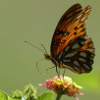Shadow like shading on left side of this hawk
-
Similar Content
-
- 1 reply
- 555 views
-
- 0 replies
- 761 views
-
Hi, I'm new and want to learn how to make photos like this! Advices welcome 😉 (Sony alpha7iii)
By thoki,
- pics like this
- experienced
- (and 3 more)
- 5 replies
- 1,043 views
-
- 7 replies
- 1,564 views
-
- 10 replies
- 1,393 views
-



Recommended Posts
Create an account or sign in to comment
You need to be a member in order to leave a comment
Create an account
Sign up for a new account in our community. It's easy!
Register a new accountSign in
Already have an account? Sign in here.
Sign In Now